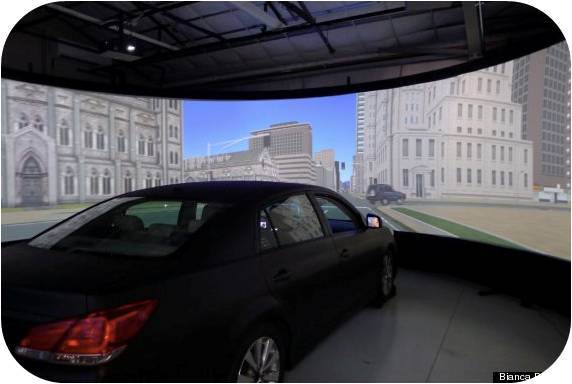We’ve talked a lot about how the Silicon Valley is one if the main hubs for automotive technology, with facilities such as Google and the Stanford Automotive Research Institute headquartered here.
As a student at Stanford, and specifically as a Psychology major, I have been lucky enough to experience research in automation first-hand. In many of my undergrad psych classes, if is often required for students to participate in graduate students’ research as test subjects. In my sophomore year I was fortunate enough to serve as a participant in a study on automated vehicles.
The study took place in the Clifford Nass Communication between Humans and Interactive Media (CHIMe) Lab. While Professor Nass unfortunately passed away a last year, his research and contributions to the field of automation was groundbreaking.

I came into the study unaware of what they were testing (some form of deception is often involved in many psychology studies). It was remarkable to see when I got there, however, that the researchers had created an actual car for me to sit in. It was a pretty nice car, too. I think they got parts from a real Cadillac. The car had a driver and passenger seat, complete dashboard, pedals, wheels, and even cup holders. (Note: I bought Shawn a car last year as an early graduation gift. Cup holders were an important consideration for Shawn - John)

While I sat in car, there was a large screen in front of me. As I was driving, a virtual road was projected in front of me. The car reacted to my touch, including turning when I turned the wheel, accelerating when I pushed the gas pedal, and stopping when I hit the brakes.
Of utmost importance to our work here, however, was that the simulator asked me to put the car on autopilot. The screen would instruct me to put it into autopilot for a set period of time. I would then have the option to keep driving myself or allow the car to drive on its own. I found out later that they were timing how much I kept the car on autopilot and testing how comfortable I felt with allowing the car to drive on its own.
Much to my own surprise at that time (this was before I knew anything about automated vehicles), I was very inclined to allow the car to drive on its own. I was especially inclined to allow it to drive on its own when the car was in the city or in an area with heavy traffic, where driving became more difficult.
It’s funny to think (especially considering I’m a Senior now and will be graduating soon) about how things really come full circle. I had no idea when I was getting into that car how much that study, which I just stumbled across in order to fulfill my credit for my class, would have an impact on the work we’re doing today.
Click here to see a video of the Stanford Autonomous Driving Simulator in action.
Shawn
